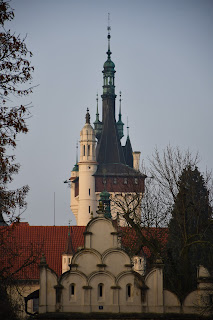Day 1 in Luanda as a non-Lusophone
I arrived in Luanda on a Friday morning just in time to clock into my job online. Angolan Airlines operates a direct route between Nairobi and Luanda, but it runs at somewhat strange hours and does not fly every day, hence why I caught my flight at six on a Friday morning and flew back at eleven in the evening on Saturday. Still, I was impressed by the quietness and smoothness of the apparently new and mostly empty Airbus. Not that I was expecting crowds on it, but I found it strange that when we arrived in Luanda, all the passengers fit on a single airport bus.
Just like
in Mozambique, I struggled to communicate in English with almost everyone, from
the immigrations official and the gentleman at the currency exchange to the
receptionist at my hotel. Once again, I fell back on my Spanish, which I mutilated
with the occasional Portuguese word and a slew of sounds that just sounded
Portuguese to me. Somehow, this worked, though generally it was easier for
people to understand me than it was for me to understand them. This was not
always inconvenient. People would quickly leave me alone when I said “não falo português” or, even
better, “I do not speak Portuguese.”
Since I had
to work in the morning, I left my exploration of the city for the afternoon. I
had some concerns about safety in Luanda before coming, so I booked a city tour
for Saturday, but since I knew we would not visit the old Portuguese churches
around my hotel in the historic centre, I decided to go out anyway. My first
impressions reassured me that there was nothing to fear. As in most African
cities I have visited, people approached me asking for money or to sell me
things, but they were not more persistent than elsewhere, and some locals just
wanted to have a friendly chat. What was more prominent in Luanda than in most
of the other African cities I have visited was the rate of child poverty.
During my few hours walking around, I was approached – individually – by a
dozen children, some of them offering to clean my shoes and others simply
begging. When I was too slow to move on, the children would crouch and start
cleaning my shoes, one or two of them with their bare hands.
My first
stop was the Church of Carmo, an old building with an ornate painted ceiling
and walls covered in azulejos. There were a few women praying in the church and
one woman sleeping on a pew in the back. From the Church of Carmo, I walked to
Luanda Cathedral, also known as the Church of Our Lady of Remedies. There was a
small gathering in the church, and I was approached for money both inside and
outside it, so I did not linger very long, but I did stay long enough to notice
that some of the women associated with the church (I could not tell whether
they were nuns, but I think not) wore colourful dresses inscribed with the
church’s name and bearing a large framed picture of the church’s patron saint.
Walking
towards the promenade along Luanda’s shore, I passed the Monument of the
Unknown Soldier. It struck me that the local culture around honouring the
victims of war is somewhat different than that in Europe, as people came to the
monument to take videos of themselves dancing. This is not to mention the
defunct eternal flame which presumably should have been burning under it. The
monument itself is quite interesting: I was told it was built in a shape of an
X to symbolise sacrifice in this deeply Christian country, its distinct bars
ostensibly referring to the individuals affected by the collective tragedy.
Not really
knowing where to go next, I followed the promenade along the coast until I
found myself, half an hour later, by the city’s port authority. The promenade
is perhaps the most ostentatiously spacious and curated part of Luanda, which is
often a little derelict and cramped with cars and people. This calm pedestrian
haven is separated from the road by a row of deciduous trees and a manicured
lawn, with a few outdoor gyms and playgrounds sprinkled along the route. A row
of regularly spaced palm trees flanks this area from the seaside, growing
alongside a bike lane that is rarely used because there are almost no bikers,
and the few bikers that do bike in this area are youths with little respect for
the dictates of mere paint on the ground. The Avenue of February Fourth, which
runs along this pedestrianised area, is the nicest road in town. It has lanes
in each direction, and the traffic lights work at every crossing.
As I made
my way back from the port authority building, I passed by a garden with a quaint
Portuguese Church – the Church of Our Lady of Nazareth. I had read about this
church on Luanda’s Wikipedia page, but I could not find it on Google Maps, so I
was delighted when I found it thanks to a poster on the wall of the garden
bearing its name. The little church was full of azulejos and praying women with
dresses bearing the likenesses of Saint Mary; despite there being no mass, it
was busier than any other church I have visited in recent days.






















Comments
Post a Comment